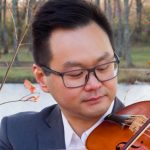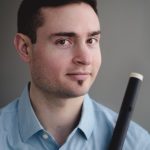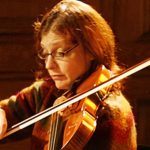Jauchzet Gott in allen Landen!
Cantata for the Fifteenth Sunday after Trinity 1. Arie
Jauchzet Gott in allen Landen!
Was der Himmel und die Welt
An Geschöpfen in sich hält
Müssen dessen Ruhm erhöhen
Und wir wollen unserm Gott
Gleichfalls itzt ein Opfer bringen
Daß er uns in Kreuz und Not
Allezeit hat beigestanden.
Shout for joy to God in all lands!
Whatever creatures heaven and earth
Contain
Must exalt His glory
And we too would now bring
An offering to our God
For in cross-bearing and distress
He has at all times stood by us.
Wir beten zu dem Tempel an
Da Gottes Ehre wohnet
Da dessen Treu
So täglich neu
Mit lauter Segen lohnet.
Wir preisen was er an uns hat getan.
Muß gleich der schwache Mund von seinen Wundern lallen
So kann ein schlechtes Lob ihm dennoch wohlgefallen.
We worship towards the Temple
Where God’s honor dwells
Where His faithfulnessDaily renewed
Rewards us with pure blessing.
We praise what He has done for us.
Though our weak mouths must babble about His marvels
Yet wretched praise can nonetheless please Him.
Höchster mache deine Güte
Ferner alle Morgen neu.
So soll vor die Vatertreu
Auch ein dankbares Gemüte
Durch ein frommes Leben weisen
Daß wir deine Kinder heißen.
O Highest One make Your goodness
Henceforth new every morning.
Then for Your fatherly faithfulness
A grateful spirit in return
Shall show through its devout life
That we are called Your children.
Sei Lob und Preis mit Ehren
Gott Vater Sohn Heiligem Geist!
Der woll in uns vermehren
Was er uns aus Gnaden verheißt
Daß wir ihm fest vertrauen
Gänzlich uns lass’n auf ihn
Von Herzen auf ihn bauen
Daß uns’r Herz Mut und Sinn
Ihm festiglich anhangen;
Drauf singen wir zur Stund:
Amen wir werdn’s erlangen
Glaub’n wir aus Herzensgrund.
Blessing and praise with honor be
to God the Father Son and Holy Spirit!
Who would increase in us
What He Promises us out of grace
That we hold fast our confidence in Him
Fully rely on Him
Build on Him from our hearts
That our heart courage and mind
Cleave firmly to Him;Of this we sing at this hour:
Amen we will obtain itIf we have faith at all times.











